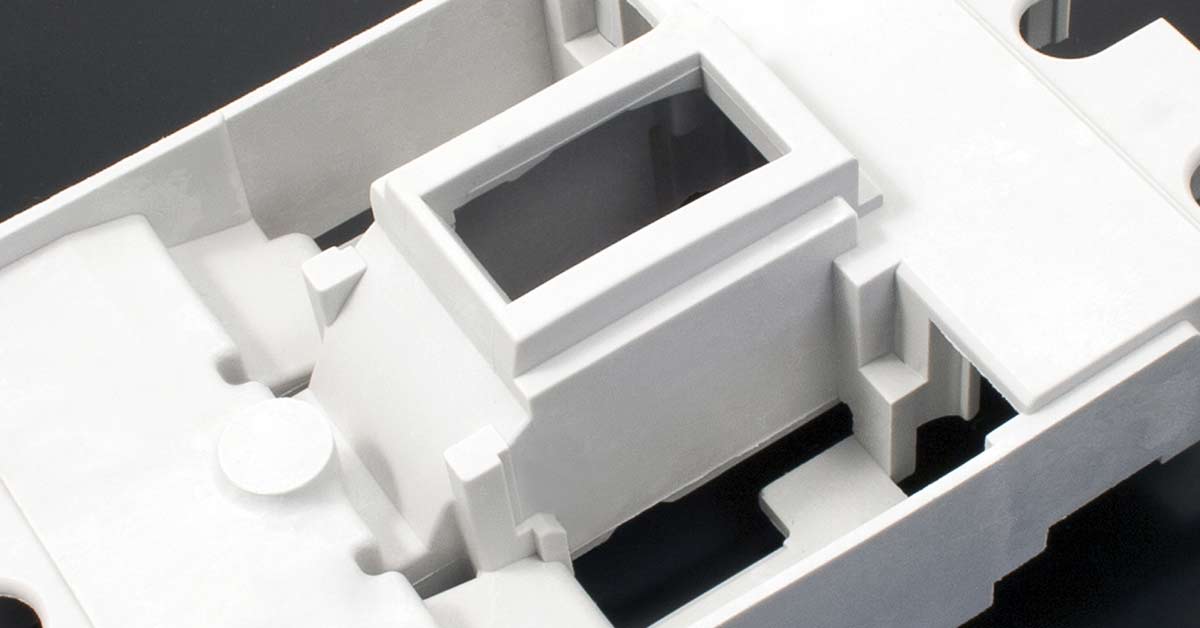
The advantages that usually motivate the use of thermosetting resins for the manufacture of parts and finished products are certainly interesting:
These favorable features allow thermosetting formulations to be considered as an excellent solution for the manufacture of dimensionally accurate parts with a temperature-independent behavior, high flame resistance without emitting thick and toxic smoke (e.g. in the railway sector), and reliable mechanical performance even in the presence of heat and constant or sudden stresses (e.g. in the electricity sector).
However, the use of thermosets involves some limitations intrinsic to their formulations, the physico-chemical nature of material, and the processing method.
In fact, cross-linking occurs between the base resin molecules due to the action of a catalyst. The chemical reaction that generates these bonds is greatly affected by the process temperature and pressure.
The combination of these factors directly affects not only the product quality, but also the cycle time (or "cure") necessary for the completion of the process.
The management of base resins and catalysts, which may be not very harmless, as well as the monitoring of conversion parameters require not ordinary skills and resources to achieve the best results.
Besides, the cross-linking reaction is irreversible, i.e. once the formation of bounds has occurred, it is no longer possible to obtain again processable raw materials.
This is the most serious disadvantage of thermosetting resins, particularly as regards minimizing the impact on the environment and the planet's resources of materials and processes, as each defective or end of life product must be necessarily disposed of, with no possibility of recycling.
One of the main conversion techniques for thermosets is nowadays the compound injection molding (hence the definition of bulk molding compound or BMC).
LATI intends to propose in this field a series of thermoplastic grades as replacement for thermosets.
This would allow for an easier and more efficient material and process management, as well as a cost reduction for the company and the environment relating to the disposal of non-usable BMCs (e.g. broken and defective pieces, waste from the feeding system, production start-up, and especially end of life products).
Thermoplastic polymers, consisting of molecules that are not chemically bound to each other and can therefore be converted and recycled even after the first use, are used by LATI in the development of compounds featuring much higher mechanical performance than typical thermosetting products.
These materials can also be used at temperatures over 150° C and in the presence of constant, intermittent, and impulsive stresses.
The weakening generated by heat exposure is balanced by a reinforcing fiber or filler content up to 65 percent, thus also reducing deformations generated by the molding process.
Materials specially designed for structural applications are also available in the self-extinguishing version (free from halogen, antimony trioxide, and red phosphorus).
These compounds feature not only of maximum self-extinguishing properties, but also excellent resistance to glow wire (GWIT/GWFI according to standard IEC60335) and high CTI values.
The table below shows the main features of the best candidates for the replacement of thermosets, in addition to the typical performance of a generic thermosetting product.
| High-end thermoset BMC | LATAMID 6 H2 G/65 | LARAMID G/60 | LATAMID 66 H2 G/50-GWHF1 | LATICONTHER 62 CEG/500- V0HF1 | LATAMID 66 H2 G/25-V0CT4 | LARAMID G/30- V0HF1 | |
|---|---|---|---|---|---|---|---|
| Compound Description | PET, 30% glass fibres, FR | PA6, 65% glass fibres | PPA, 60% glass fibres | PA66, 50% glass fibres, FR, halogen and redP free | PA6, 50% gf/ mineral, FR halogen and red P free | PA66, 25% glass fibres, FR | PPA, 30% glass fibres, FR halogen and red P free |
| Density (g/cm3) |
1.85 | 1.74 | 1.78 | 1.61 | 1.77 | 1.82 | 1.49 |
| Elastic modulus (23°C, MPa) | 13000 | 20000 | 26500 | 16500 | 10000 | 9000 | 14000 |
| Load at break (23°C, MPa) | 55 | 200 | 290 | 205 | 85 | 75 | 110 |
| Elongation at break (23°C,%) | 0.4 | 2.2 | 2.6 | 2.2 | 1.5 | 2.4 | 1.2 |
| Charpy (notched, kJ/m2) |
40 | 12 | 15 | 12 | 3.5 | 4.5 | 6 |
| HDT (1,8 MPa, °C) |
>200 | 205 | 280 | 250 | 200 | 185 | 260 |
| UL94 Flame resistance | V0 | HB | HB | V1 (0,75mm) V0 (1.5/3.0 mm) | V1 (0,75mm) V0 (1.5/3.0 mm) | V0 (0.75/1.5/3.0 mm) | V0 (0.75/1.5/3.0 mm) |
| GW flammability index (°C) | na | na | na | 960 (1.0/2.0 mm) | 960 (1.0/2.0 mm) | na | 960 (1.0/2.0 mm) |
| GW ignition temperature (°C) | na | na | na | 800 (1.0/2.0 mm) | 775 (1.0 mm) | 825 (1.0 mm) - 875 (2.0 mm) | 775 (1.0/2.0 mm) |
| CTI - (V) | 600 | na | na | 600 | 600 | 600 | 600 |
| RTI (mechanical, w/impact,°C) | 130 | na | na | na | 130 | 65 | na |
| Extra | Also available as V0 (0,75 mm /1.5 mm/ 3 mm) | Thermally conductive compound | NF F16 101/102: I2 F1 TS 45545: HL1- 2-3 |
Areas where thermosets can be successfully replaced with LATI thermoplastics are countless: from the railway to the electricity, electronics, furnishings, mechanics, and food industry.
LATI’s engineers are at your disposal for the study and development of new thermoset-free applications.